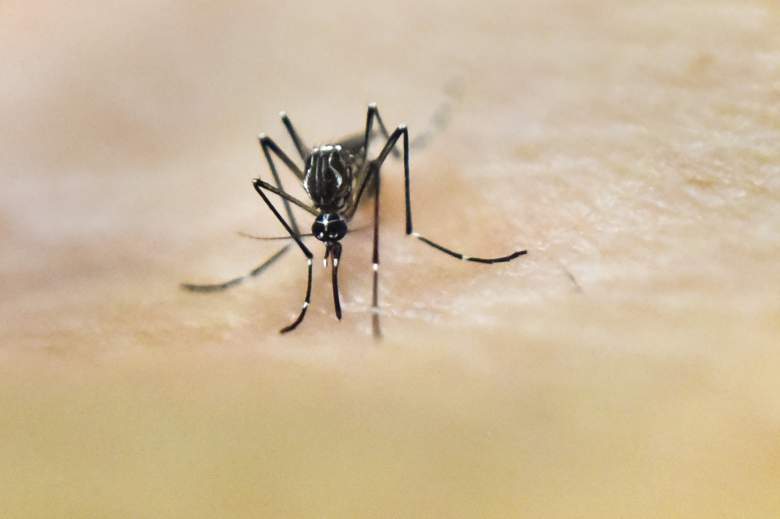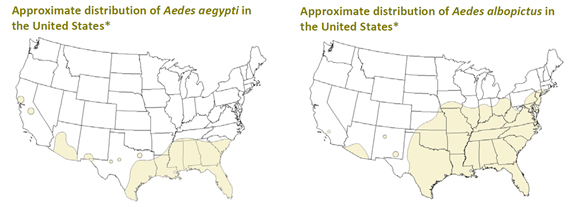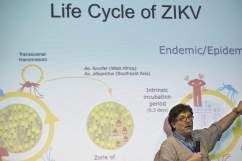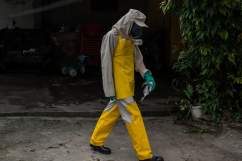
An Aedes Aegypti mosquito is photographed on human skin. This is the main mosquito carrying Zika and it lives in the U.S. Which states have Zika so far? (Getty)
Where is the Zika virus in the United States? How is it transmitted? Are people in the United States in danger from the Zika virus? Is there a map of affected states? Multiple cases of the Zika virus have been reported in the United States. Could it get bad here?
Here’s what you need to know.
Here’s Where It’s Been Reported in the U.S.
So far, 31 individual Zika cases have been reported in the U.S., according to Gizmodo. This includes 11 people in the continental U.S. and 20 confirmed cases in Puerto Rico and the U.S. Virgin Islands. It’s unclear exactly where all the locations in the U.S. are, because the CDC has declined to provide the locations of Zika cases in the U.S., Scientific American reported. However, by looking at local news reports and reports from state health departments, people with the disease have been reported in the following states, at least. (These numbers are from Scientific American, unless otherwise noted.)
- Arkansas – 1 case originating from Central America
- California – 6 cases (2 from 2015 and the rest from 2013 and 2014)
- D.C. – At least 3 cases confirmed, all from people who traveled abroad. One person is pregnant.
- Florida – 3 cases originating from Colombia and Venezuela
- Georgia – First case confirmed on February 3, originating from Colombia.
- Hawaii – 1 case of a woman who gave birth to a child with microcephaly and had lived in Brazil
- Illinois – 2 cases originating from Honduras and Haiti (both women were pregnant)
- Massachusetts – 1 case so far
- Minnesota – 1 case originating from Honduras
- Montana – Not confirmed, but one case may have been discovered in northwest Montana, but labs haven’t confirmed it yet
- New Jersey – 1 case originating in Colombia
- New York – At least 7 cases
- Oregon – 3 cases originating from Polynesia
- Tennessee – First case reported on February 9. Originated from South America.
- Texas – At least 2 cases, originating from El Salvador and Colombia, and 1 case transmitted sexually
- Virginia – 1 case from Central America
- Wisconsin
The disease also has active, local transmissions in Puerto Rico and Mexico. That means that the active transmissions aren’t very far from the United States.
You can find an updated map of reports in the United States at this link.
The Disease Hasn’t Been Actively Transmitted Locally Yet
So far, the disease hasn’t been transmitted locally. This means that no one has become infected by being bitten by a mosquito in the U.S. The people with reported infections all traveled here from other countries, including Haiti, Honduras, Venezuela, Brazil, El Salvador, Colombia, Easter Island/Chile, French Polynesia, Kiribati, Cook Islands, and Polynesia, according to Scientific American.
It Could Spread in the U.S. And Here’s How
We’re not a safe haven in the U.S. and it’s very possible the disease could start to spread here. The mosquito species that carries the virus, Aedes, lives in the U.S., according to the CDC. It prefers biting people and is most commonly out in the daytime, according to the CDC. If the mosquito bites an infected person, it can get the virus and then spread it to other people that it bites. This map shows the approximate distribution of Aedes aegypti and Aedes alboptictus in the United States, created by the CDC. However, it’s important to remember that just because the mosquitoes are in this region doesn’t mean Zika will spread there:

Distribution map of mosquitoes that could carry Zika. This is not a map of reported Zika cases. (CDC)
Lawrence Gostin, director of the O’Neill Institute for National and Global Health Law at Georgetown University in Washington, told CNN that Zika “will certainly come to the United States, and I think it will come fairly rapidly.”
However, the CDC is assuring people that the outbreaks in the U.S. will be limited, Gizmodo reported. Meanwhile, the World Health Organization has called for an emergency session to address the disease’s explosive growth.



